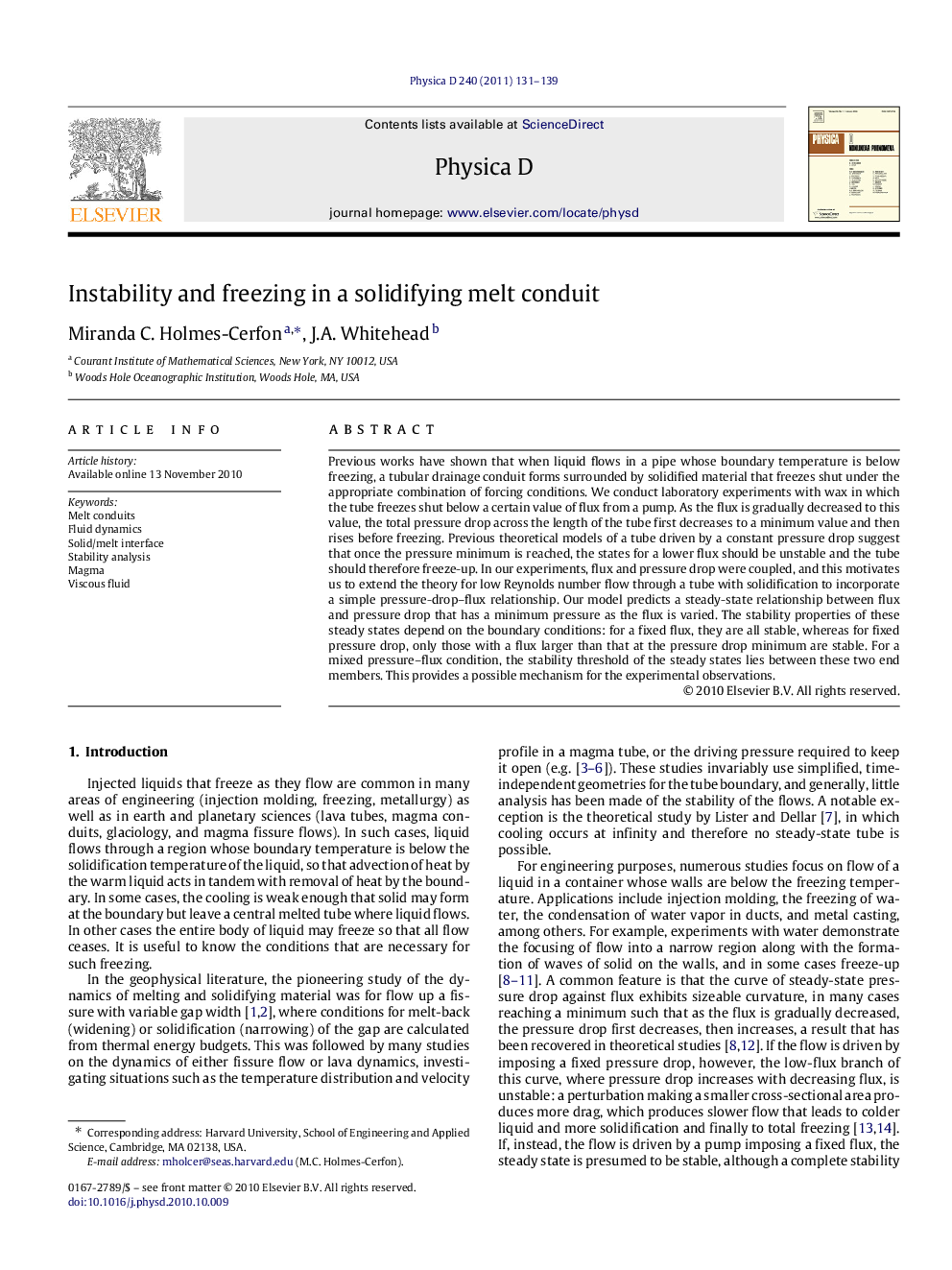| Article ID | Journal | Published Year | Pages | File Type |
|---|---|---|---|---|
| 1896376 | Physica D: Nonlinear Phenomena | 2011 | 9 Pages |
Previous works have shown that when liquid flows in a pipe whose boundary temperature is below freezing, a tubular drainage conduit forms surrounded by solidified material that freezes shut under the appropriate combination of forcing conditions. We conduct laboratory experiments with wax in which the tube freezes shut below a certain value of flux from a pump. As the flux is gradually decreased to this value, the total pressure drop across the length of the tube first decreases to a minimum value and then rises before freezing. Previous theoretical models of a tube driven by a constant pressure drop suggest that once the pressure minimum is reached, the states for a lower flux should be unstable and the tube should therefore freeze-up. In our experiments, flux and pressure drop were coupled, and this motivates us to extend the theory for low Reynolds number flow through a tube with solidification to incorporate a simple pressure-drop–flux relationship. Our model predicts a steady-state relationship between flux and pressure drop that has a minimum pressure as the flux is varied. The stability properties of these steady states depend on the boundary conditions: for a fixed flux, they are all stable, whereas for fixed pressure drop, only those with a flux larger than that at the pressure drop minimum are stable. For a mixed pressure–flux condition, the stability threshold of the steady states lies between these two end members. This provides a possible mechanism for the experimental observations.
Research highlights► Determined the stability of flow of hot liquid through cooled tube. ► Stability depends on upstream boundary condition. ► Coupled pressure–flux condition has greater stability region than pressure driven.
